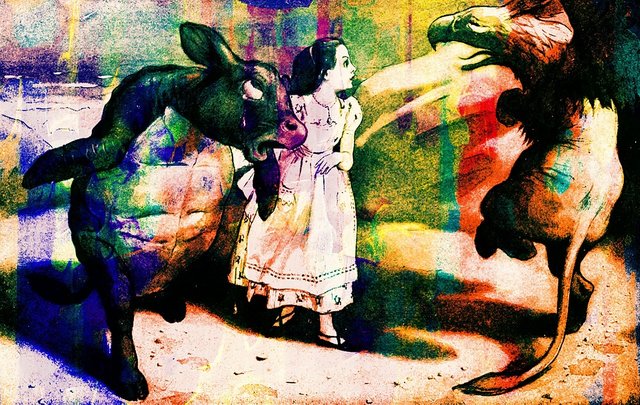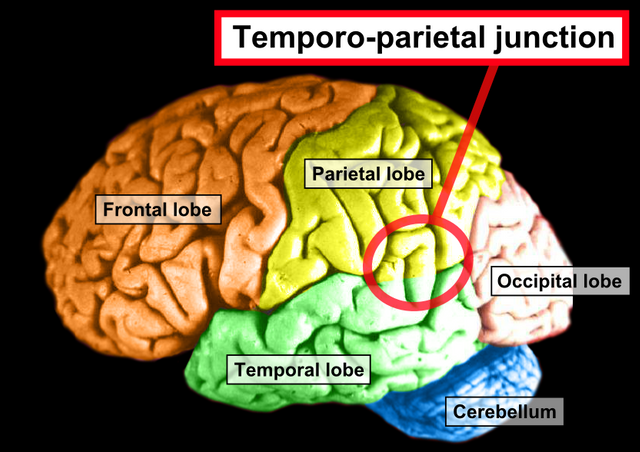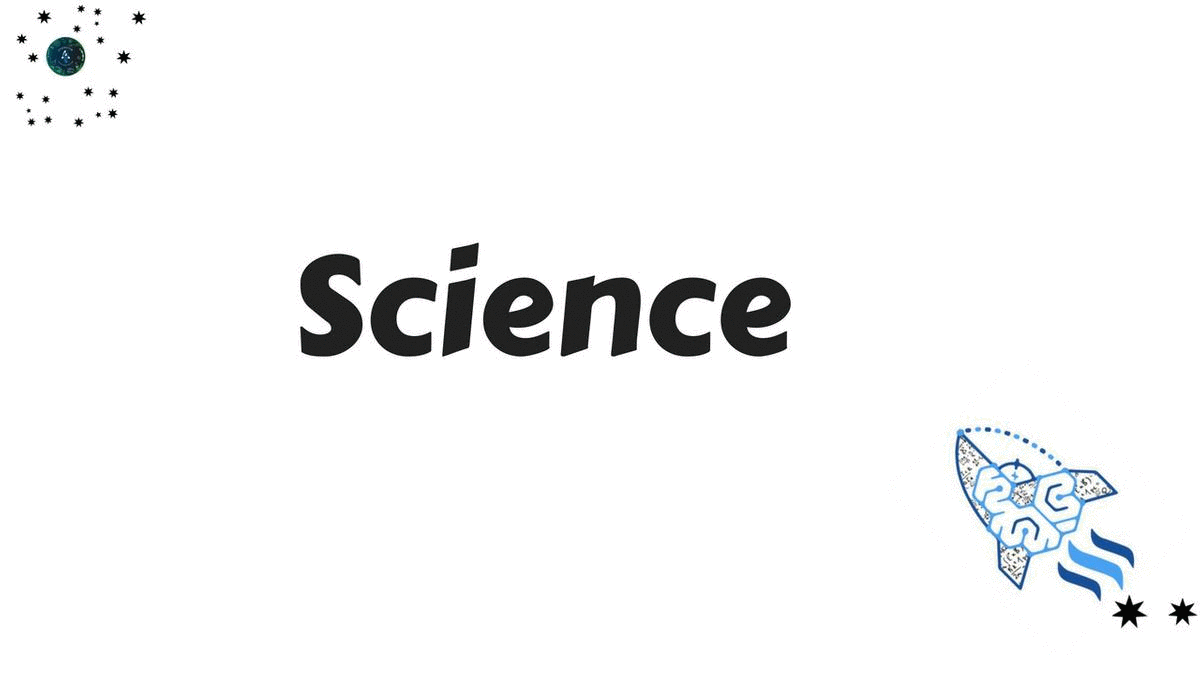Alice in Wonderland Syndrome - Fairytale turns real life Nightmare
 (License: CC0]: Pixabay
(License: CC0]: Pixabay “Alice in Wonderland” is a children’s story written by Lewis Carroll. The story talked about a bored little girl named Alice who followed a rabbit into a rabbit hole and landed in a world of anthropomorphism which Lewis described as “Wonderland”. In this strange land, Alice was able to communicate with animals, plants and even inanimate objects. She had abilities to also shrink and grow at different episodes; a perfect example or instance in the story was when she swam in her own tears - this shows how tiny she had become after shrinking. In the story she found a bottle filled with water that read “drink me”, she drank it and became small; the more she drank the tinier the became. She also saw pieces of cake that read “eat me” and she ate them making her grow so big that her head touched the ceiling. This made Alice so sad that she began to cry (this was how she created the pool of tears in which she swam).
Alice in Wonderland syndrome was coined by John Todd in 1955 as the patient he examined had characteristics or had experiences that resembled the kind of the fictitious character, Alice had in Carroll’s book. It has other fancy names like Todd’s syndrome or Lilliputian hallucinations. This image distortion or distortion of Alice’s reality as a whole can be equated to the symptoms an individual has when he or she is diagnosed with Alice in Wonderland syndrome. There are some significant symptoms you could use to diagnose the syndrome which are; sufferers experience micropsia (where an object seems to be way smaller than its original size.), pelopsia (a situation where appear closer than they actually are.), teleopsia (a situation where objects appear further away than they really are) and macropsia (where an object or environment looks way bigger or larger than its original size. Alice must have experienced micropsia when she swam in her pool of tears and macropsia when she became too big that her head touched the ceiling.
This syndrome is known to affect mostly children and parents who do not understand this condition may think that, the child is faking it, as symptoms last for only a few minutes. Most people believe that Lewis Carroll suffered from a similar condition that he ascribed to Alice. The story read that Alice woke up after all these scenarios she had experienced and realized that she was only dreaming and none of these really happened; it could have been that she was really dreaming or it was her brain/mind playing tricks on her. This syndrome with the cute and fairytale name is a perfect example of you shouldn’t judge a book by its cover; wonderland seems like a name of a fun place to go to, there is even a place in my country’s capital that is called “Wonderland” where children visit, to have so much fun but sadly this isn’t the wonderland Carroll talked about in his book. He was rather referring to a psychedelic world where reality was no longer reality but a bunch of unbelievable and disturbing hallucinations.
 (License: CC0]: Pixabay
(License: CC0]: Pixabay Alice in Wonderland syndrome with acronym AIWS affects an individual’s key senses which result in the disruption of reality and faulty perceptions. Strange things happen to sufferers in every episode of this syndrome which makes it more horrifying. Imagine a situation where you start to see straight lines as wavy, onset of visual aberration where light is unable to focus at a point and since colour is a product of light, the perception of colours surrounding you becomes faulty. You start to see blue as yellow or red as purple or whatever- you may even start to see some parts or all parts of your body becoming bigger or smaller than usual; this for sure is more horrifying in real life than you are already imagining as you read this and it’s definitely not wonderful as the name” Wonderland” may seem.
Just like other disorders, there is a disruption or disconnect noticed in the brains of people who suffer from this condition. This causes the brain to play tricks on the sufferers existence and I mean really mean tricks, like making three dimensional objects to look flat, causing still objects to appear as though they were or are moving; Imagine sitting in your room and all of a sudden your mobile phone or pillow starts to move - this doesn’t make sense in reality and it makes you wanna go mad but just for a few minutes until you realise that none of these scenes you experienced are real; this spells ‘Super Freaky” on all sides. I mentioned having a disconnect in the brains but didn’t say specifically where the nuts are said to be loosened; first, the emergence of Alice in Wonderland syndrome is closely related to migraines which cause changes in the parts of an individual’s brain that deals with sensory data like our vision, hearing, feeling etc.
 (License: Authour -John A Beal, CC BY-SA 2.5 Generic.]: wikicommons
(License: Authour -John A Beal, CC BY-SA 2.5 Generic.]: wikicommons These parts include the temporoparietal junction responsible for putting together information from outside and within the body. It makes sense to say that when the changes in the part of the brain that deals with sensory data or information occur and our reality is basically what our physical and actual senses perceive then there is an automatic change or disruption of our actual reality which is the number one symptom of the Alice in Wonderland syndrome. The good part about this syndrome unlike other syndromes I had talked about is that it wears off as the individual ages. It is common among children the average age of six; like I said symptoms tend to disappear as the sufferer ages mostly around the sufferer's adolescence period but may last until their late 20s in some individual cases. This syndrome is also believed to be hereditary as most cases reported had parents who were also affected by the syndrome.
This syndrome has been stated to be affiliated with complex partial seizures and epilepsy, non-specific hyperpyrexia, viral infection, infectious mononucleosis and also the migraines. The actual cause of AIWS is not clear enough to scientists/doctors but it is believed that this syndrome can be a type of migraines auras as they cause similar symptoms to occur. As I write this article, there is no treatment for this syndrome, the best we could do for sufferers of this syndrome is to make them feel comfortable and help them realise that it’s just hallucinations and that they are not crazy or haunted for sure. The fact that, not much is known about the condition makes it even harder for doctors to diagnose and give proper care to people suffering from this condition. The good thing about this rare condition is that it is usually not dangerous in nature; the only threat AIWS poses to its victim is that, during this period where the individual’s reality is altered, the individual may freak out and hurt his or herself and probably the people around. Sometimes the sufferers of this syndrome know that these hallucinations are not real but just their mind to play tricks on them but at the same time can not control or readjust their reality.
This for sure is mind wobbling and makes victims really uncomfortable and scared; I experienced something close to this few months ago, it wasn’t as bad as the symptoms AIWS portray but I believe it should be close. Well, here is the very brief story- I got into bed quite stressed both mentally and physically. I thought about a couple of things until I slept off, all of a sudden I fell into something like a trance (I actually thought my soul was leaving my body - this really got me terrified), I was asleep but didn’t know I was sleep, the atmosphere was stuffy and I felt as though I was suffocating to death. I tried getting up from my bed but my body was still, I couldn’t move any part of me, I felt literally too weighty for my own self to carry. I screamed for help, but no one could hear me, even my roommate that was in the same room with, did not hear, I struggled and continued struggling until I finally woke up. I was so surprised when I realised everything I felt and said was not real but I was obviously happy at the same time; when I got myself together, I immediately googled the situation and realised that I just experienced “hypnopompic hallucination”. So what I am trying to say from this my little story, is briefing us on my experience of when my reality was somewhat disrupted and how scared and worried I was, bearing in mind that this isn’t a mental disorder but just a “once in a blue moon” kind of situation; now people with AIWS have to face and experience worse episodes that come any time of the day and can last as long as it wants without control from the sufferer- quite scary and uncomfortable childhood and late adulthood or life I would say.
Finally, I have tried to explain all we need to know about AIWS but I would also want to share a few ways I would recommend to follow in order to manage or prevent AIWS. Well, the vast majority of these syndromes often comes as a result of migraines which technically means avoiding migraines is basically reducing your chances of experiencing AIWS. Eating healthy and avoiding foods that would trigger migraines like chocolate, alcoholic beverage, processed meat, coffee etc.
Further reading
Lewis Carroll: Alice's Adventures in Wonderland. London 1865. 2. J. Todd: Syndrome of Alice in Wonderland. Canadian Medical Association Journal, Ottawa, 1955, 73: 701-704.
C. W. Lippman: Certain hallucinations peculiar to migraine. Journal of Nervous and
Mental Disease, Baltimore, 1952, 116: 346-351.
Copperman SM. “Alice In Wonderland” Syndrome as a Presenting Symptom of Infectious Mononucleosis in Children: A Description of Three Affected Young People. Clin Pediatr. 1977;16:143-6

This post has been voted on by the steemstem curation team and voting trail.
There is more to SteemSTEM than just writing posts, check here for some more tips on being a community member. You can also join our discord here to get to know the rest of the community!